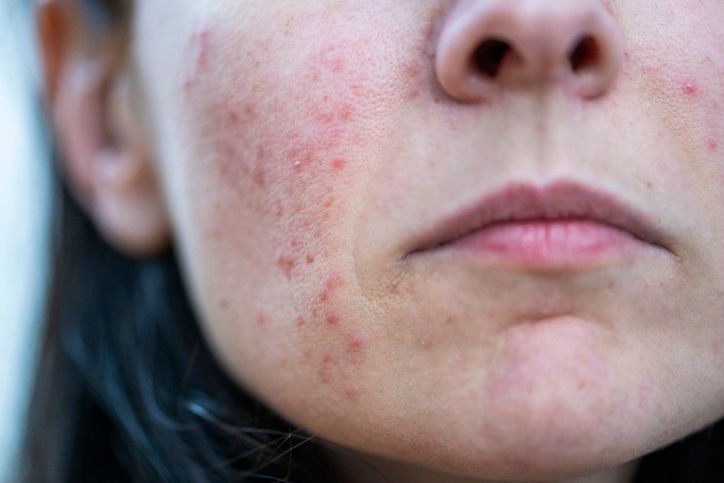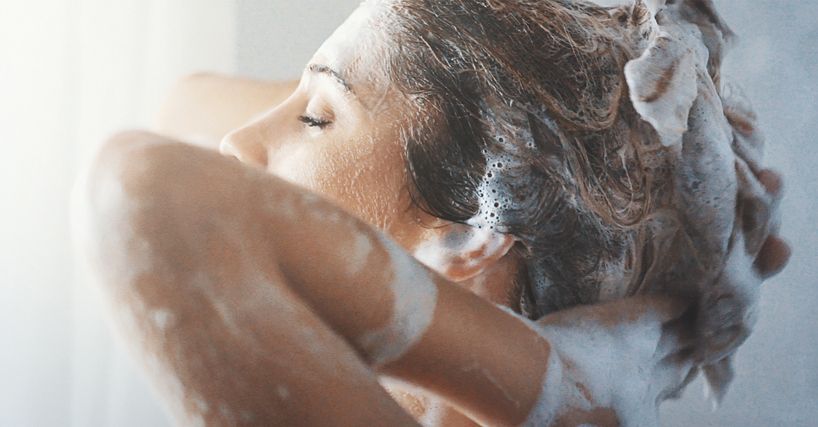Author: Natalie Ng|Updated: 16 May 2025
Dark spots have a way of sticking around—whether they show up after a breakout, too much sun, or some kind of irritation. They’re super common and can show up on any skin tone, whether you’ve got sensitive skin, oily skin, or anything in between. The thing is, you don’t need to go overboard with strong treatments to see a difference. There are gentle ingredients that actually work, like vitamin C, niacinamide, alpha arbutin, and kojic acid. They help fade dark spots, even out your skin tone, and smooth texture without making your skin feel dry or irritated. And if you’re not wearing SPF daily, it’s probably time to start. Sun protection makes a huge difference. It helps stop new spots from forming and gives your skincare products a real chance to do their job. Up next, we’ll walk through seven simple ways to fade dark spots while keeping your skin happy and healthy. If you’re looking for results without the stress, you’ll want to keep reading.

Vitamin C Serum for Brighter Skin and Fewer Dark Spots
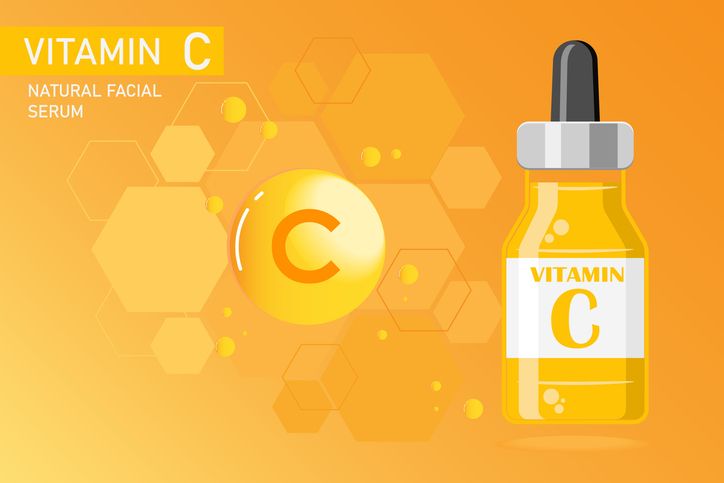
Vitamin C targets melanin buildup and uneven skin tone
Vitamin C helps with dark spot reduction by slowing down melanin production—the main cause of brown spots, acne scars, and sun spots. It also supports skin cell turnover, which helps fade discoloration and smooth out uneven skin texture over time.
This antioxidant protects against sun damage and free radicals that can make dark spots worse. It’s safe for most skin types, including deeper skin tones and sensitive skin, and works well as part of a daily routine.
Choosing the right form and using it correctly
Look for serums with 10–20% L-ascorbic acid. That’s the most effective form of vitamin C in skincare products. If your skin is sensitive or easily irritated, start with a lower concentration and test how it feels over a few weeks.
Apply a few drops in the morning after cleansing and before moisturizer or SPF. Keep the bottle tightly closed and stored away from direct light to keep it stable.
With consistent use, you’ll likely start to notice a brighter, more even complexion—and fewer dark spots that stand out under makeup or bare skin.

Niacinamide Reduces Dark Spots and Supports Skin Health

Slows melanin transfer and fades discoloration
Niacinamide, also known as vitamin B3, helps fade dark spots by blocking the transfer of melanin to the skin’s surface. Instead of bleaching the skin, it gently prevents extra pigment from building up in one place. This makes it ideal for treating acne scars, sun spots, brown spots, and other forms of uneven tone—especially if your skin reacts easily to stronger ingredients.
It also helps improve skin tone by boosting hydration and calming redness. This makes it especially useful for sensitive skin or anyone dealing with both discoloration and irritation. Niacinamide works well across all skin types and skin colors, and it helps improve overall skin texture without causing dryness.
Helps the skin barrier stay strong and balanced
Beyond fading spots, niacinamide supports your skin’s natural barrier. It increases ceramide production, which keeps moisture in and harmful irritants out. This is helpful if your skin feels rough, tight, or inflamed. Over time, a stronger barrier means fewer flare-ups and a more even-looking complexion.
It also helps balance oil production, which can reduce breakouts and clogged pores. If you’re dealing with acne along with dark spots, this makes niacinamide a helpful multitasker.
Application tips for best results
Look for serums or creams with 2–5% niacinamide to start. That range is usually effective and gentle. If your skin responds well, you can move up to 10%. Apply it after cleansing and before moisturizer, once or twice a day. It absorbs quickly and doesn’t need much time before layering other products.
You can easily use niacinamide with other brightening ingredients like vitamin C, tranexamic acid, or alpha arbutin. It fits into most routines without causing irritation, and with consistent use, you'll likely see visible improvement in 8–12 weeks.
Fades discoloration while keeping skin calm
Alpha arbutin is one of the gentlest ingredients for treating dark spots. It works by slowing down melanin production at the source, which helps fade dark patches like sun spots, brown spots, acne scars, and uneven skin tone. Unlike harsher brightening treatments, it doesn’t strip your skin or cause redness, which makes it a safe choice if you have sensitive skin or deeper skin tones.
It works steadily over time, so while the changes aren’t instant, the results are more even and natural-looking. If your skin flares up easily or reacts to stronger actives, alpha arbutin is a safer way to treat discoloration without pushing your skin too far.
Best way to use alpha arbutin in your routine
Look for a serum with 2–5% alpha arbutin. That range is effective but still gentle enough for daily use. Apply it to clean skin after cleansing, while your face is still slightly damp. A small amount is enough—focus on areas with visible dark spots but feel free to apply it across your whole face for even tone.
Wait about 30–60 seconds before layering on other products to give it time to absorb. You can use it once or twice a day, but always follow with sunscreen in the morning. Without sun protection, new spots can form and undo your progress.
Safe pairings that boost brightening results
Alpha arbutin works well with other brightening and hydrating ingredients. You can layer it with:
• Vitamin C in the morning for an extra boost against sun damage and discoloration
• Hyaluronic acid, which helps your skin stay hydrated and improves absorption
• Niacinamide, spaced a few minutes apart in your evening routine
Used consistently, alpha arbutin can help soften dark spots and leave your skin tone looking clearer and more even over time—without the risk of irritation or rebound pigmentation.
Book Now to Experience
PicoCure Pigmentation Removal Treatment
1 Minute Self-Registration
Date should not be before minimal date

Daily Sunscreen Prevents Dark Spots From Getting Worse

Blocks UV damage and protects skin tone
Sun exposure is one of the biggest causes of dark spots. Without daily sunscreen, your skin stays vulnerable to UV rays that trigger melanin production. Even if you’re using the best dark spot treatment, it won’t work well if your skin is still getting hit by UV every day. That includes cloudy days and time spent near windows—sun damage adds up quietly.
Using sunscreen helps prevent new spots from forming and stops existing ones from getting darker. It’s one of the simplest ways to support dark spot reduction, protect against uneven skin tone, and keep skin texture smooth over time.
Choosing and applying sunscreen the right way
Pick a broad-spectrum sunscreen with at least SPF 30. That means it protects against both UVA (aging) and UVB (burning) rays. Apply a generous amount—about a quarter-sized dollop—for your face and neck every morning. If you’re spending time outside, reapply every two hours.
Don’t skip areas like the sides of your face, ears, jawline, and hands. These spots often get missed but show sun damage just as quickly. Keeping a travel-sized SPF in your bag makes reapplying easier during the day.
Sunscreen also helps your active ingredients—like vitamin C, alpha arbutin, or kojic acid—do their job without being canceled out by more UV damage. It doesn’t fade spots on its own, but it creates the protection your skin needs to recover.

AHA and BHA Exfoliants Improve Skin Texture and Fade Spots
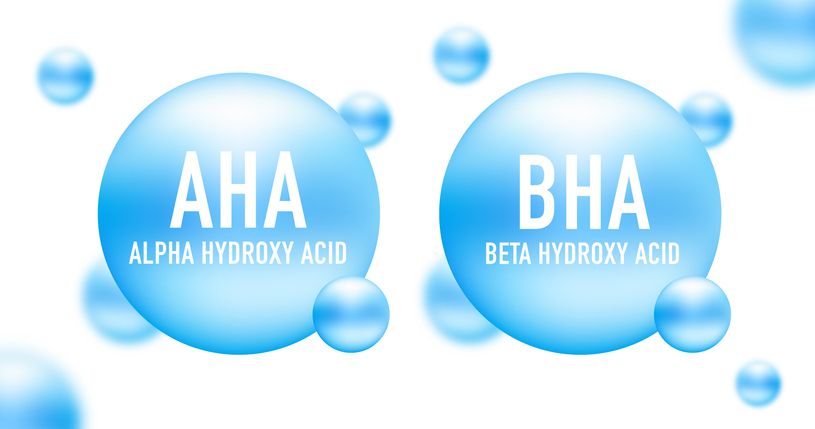
Support skin cell turnover and help reveal brighter skin
Exfoliants like AHAs (alpha hydroxy acids) and BHAs (beta hydroxy acids) help fade dark spots by clearing away dead skin cells on the surface. This speeds up skin cell turnover, which makes it easier for dark marks—like acne scars, brown spots, or sun spots—to fade over time.
AHAs, such as glycolic acid or lactic acid, are water-based and work on the surface to smooth skin texture and brighten dull areas. BHAs, like salicylic acid, go deeper into pores, making them ideal if your skin is oily, acne-prone, or prone to clogged pores.
Start slow and adjust based on how your skin responds
Begin with a low concentration—around 2–5% for AHAs or 0.5–1% for BHAs. Use it once or twice a week, especially if your skin is new to exfoliation. Apply after cleansing and before serums or moisturizer. If your skin feels dry or irritated, space out usage to give it time to adjust.
Once your skin builds tolerance, you can slowly increase frequency or strength. Never layer exfoliants with other strong actives like retinol on the same day, especially if your skin is sensitive. And always follow with sunscreen in the morning—exfoliants make your skin more sensitive to the sun, even if you only use them at night.
Used correctly, exfoliants help smooth uneven tone, reduce dark spots, and improve the overall glow of your skin without stripping it or causing irritation.
Book Now to Experience
PicoCure Pigmentation Removal Treatment
1 Minute Self-Registration
Date should not be before minimal date

Licorice Root Extract Brightens Skin and Calms Redness
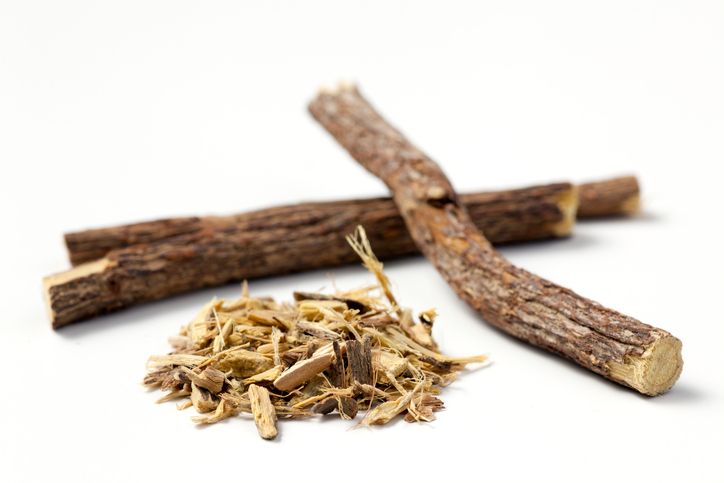
Targets melanin production and supports an even skin tone
Licorice root extract is a plant-based ingredient that helps fade dark spots by blocking tyrosinase—an enzyme involved in melanin production. It works at the early stages of pigmentation, which makes it especially helpful for preventing spots from getting darker while gently lightening existing ones.
It’s a great choice for anyone dealing with uneven skin tone, sun spots, or post-acne discoloration, especially if your skin gets easily irritated by stronger treatments. Licorice root also helps soothe redness and inflammation, making it ideal for sensitive skin or skin that’s healing from acne.
Best way to add it to your routine
Look for serums or moisturizers with at least 1–2% licorice root extract. You’ll often see ingredients like glabridin or liquiritin listed—that’s the part of the extract that does the work. Apply it once a day, usually after cleansing and before heavier creams or SPF.
Licorice root pairs well with other brightening ingredients like vitamin C or niacinamide. It helps enhance their effects while keeping skin calm, which is especially useful if you’re layering more than one active ingredient.
Stick with it for at least 8–12 weeks, and you’ll likely start to see your skin tone look more even, with less visible discoloration and a calmer, smoother appearance.

Hyaluronic Acid Boosts Hydration and Enhances Brightening
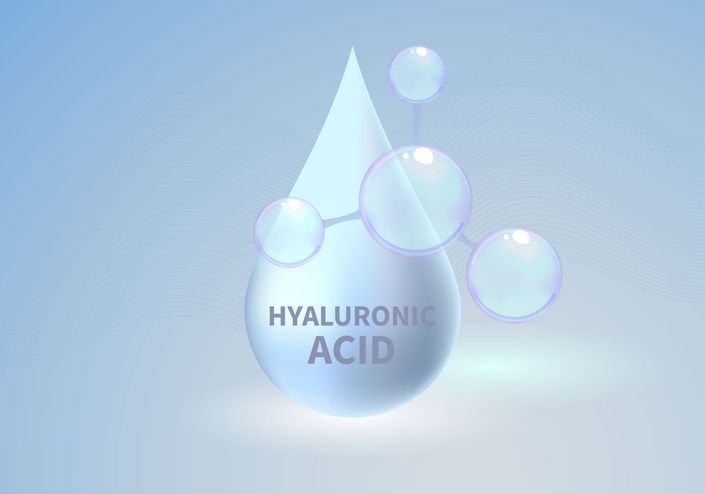
Preps the skin to absorb dark spot treatments more effectively
Hyaluronic acid doesn’t directly lighten dark spots, but it plays an important role in helping other ingredients work better. It holds moisture in the skin, creating a plump, hydrated surface that allows active ingredients—like vitamin C, alpha arbutin, or tranexamic acid—to absorb more evenly and deeply.
When your skin is properly hydrated, it’s less likely to become irritated, dry, or flaky from brightening treatments. That means fewer setbacks, better tolerance, and smoother progress toward fading discoloration.
How to apply hyaluronic acid for best results
Use a hyaluronic acid serum right after cleansing, while your skin is still slightly damp. This helps lock in moisture and allows the serum to bind water into the top layers of your skin. After applying, wait 30 seconds, then follow with your dark spot treatment.
For even more hydration, you can lightly mist your face with water or a facial spray before layering your next product. Finish with a moisturizer to seal everything in.
Look for formulas that include different molecular weights of hyaluronic acid—these target multiple layers of the skin and keep it hydrated throughout the day. With daily use, your skin stays soft, plump, and ready to get the most out of every brightening product you apply.
Book Now to Experience
PicoCure Pigmentation Removal Treatment
1 Minute Self-Registration
Date should not be before minimal date

Combining Active Ingredients for Better Dark Spot Treatment
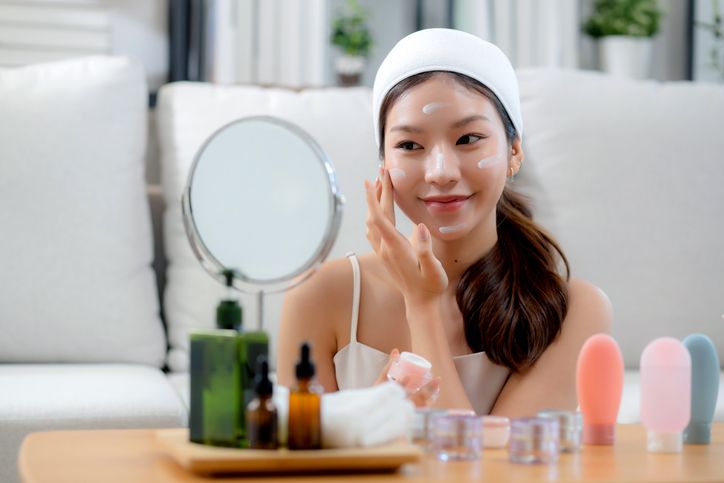
Why ingredient combinations improve results
Fading dark spots isn’t just about one product—it’s about how your ingredients work together. Some combinations are more effective because they support each other’s benefits while reducing the risk of irritation. When you pair brightening actives with calming or hydrating ones, your skin can handle more without getting overwhelmed.
This kind of balanced routine is especially helpful for sensitive skin and deeper skin tones, where harsh products can lead to rebound pigmentation or inflammation.
Effective ingredient pairings for dark spot reduction
• Vitamin C + Ferulic Acid + Vitamin E
This classic combo helps stabilize vitamin C, boost antioxidant protection, and brighten the skin more effectively. It’s great for treating sun damage and uneven tone caused by sun exposure.
• Niacinamide + Tranexamic Acid
Niacinamide calms the skin and fades discoloration, while tranexamic acid targets pigmentation at a deeper level. Together, they work well for stubborn dark spots and post-inflammatory hyperpigmentation from acne.
• Alpha Arbutin + Hyaluronic Acid
Arbutin targets melanin, and hyaluronic acid keeps the skin barrier strong and hydrated. This pairing helps lighten spots gradually without irritation.
• Licorice Root Extract + Salicylic Acid
If you have acne-prone skin, this combo helps treat the cause and the after-effects. Salicylic acid clears pores, and licorice root calms inflammation while gently brightening.
Keep layering simple and build gradually
Apply water-based serums first, then move to gels or creams. Let each product absorb before layering the next. Space out stronger actives like AHA/BHA or retinol and avoid overloading your skin—especially if it’s already reactive.
With consistent use and smart layering, your skin will respond better, and you’ll start seeing results that last.

PicoCure Pigmentation Removal for Faster Dark Spot Reduction
Treat stubborn dark spots with laser precision
If skincare products haven’t been enough to fade your dark spots, PicoCure Pigmentation Removal Treatment offers a more direct solution. This non-invasive laser treatment targets pigment beneath the surface, helping to break it down and clear it away naturally through your body’s metabolism. It’s designed to treat sun spots, age spots, acne scars, and melasma—even in deeper skin tones where traditional lasers often cause irritation or rebound pigmentation.
How PicoCure works
PicoCure combines picosecond and nanosecond laser energy to reach different layers of the skin. The nanosecond laser tackles deeper pigmentation by breaking it into smaller particles. Then the picosecond laser goes further, shattering those fragments into fine dust-like particles that your body gradually removes on its own. The treatment uses four wavelengths (1064nm, 650nm, 585nm, and 532nm), making it highly effective for different types of discoloration and skin tones.
Why it supports your skincare results
While products like vitamin C, niacinamide, and alpha arbutin support gradual dark spot reduction, PicoCure speeds up the process by directly targeting pigment. It enhances skin tone, boosts skin cell turnover, and activates collagen production. That added collagen helps improve skin texture, shrink pores, and restore elasticity—making your skin more responsive to topical treatments and better at holding onto hydration.
Benefits of PicoCure for treating dark spots
• Breaks down pigment at multiple skin depths
• Safe for sensitive skin and deeper skin tones
• Stimulates collagen to improve skin texture
• No recovery time needed—you can return to your day right after
• Helps improve results when combined with the right skincare products
For best results, a full course of 6–8 sessions is usually recommended. The treatment is comfortable, and most people describe only a light warming sensation on the skin.
If you’re looking for a safe, effective way to treat stubborn dark spots on the face—especially when skincare alone isn’t enough—PicoCure is worth considering.
Book PicoCure now and take the next step toward clear, even-toned skin.
New Beauty's PicoCure Pigmentation Removal TreatmentBook Now to Experience
PicoCure Pigmentation Removal Treatment
1 Minute Self-Registration
Date should not be before minimal date
FAQ
1. Can dark spot correctors be used under makeup?
Yes, most dark spot correctors are designed to be layered under makeup without affecting performance. Look for lightweight, fast-absorbing formulas that won’t pill or cause patchiness when paired with foundation. Ingredients like niacinamide, tranexamic acid, and vitamin C can be applied after cleansing and before your primer or moisturizer. Just make sure your skin is dry and product has absorbed fully before applying makeup.
2. Is it safe to use retinol with dark spot treatments?
Retinol can help with dark spot reduction by boosting skin cell turnover, but it should be introduced carefully, especially when used with other active ingredients like glycolic acid or salicylic acid. If you're combining retinol with a dark spot corrector, use them on alternate nights to avoid irritation. This is especially important for sensitive skin or if you're already using brightening ingredients like vitamin C during the day.
3. What causes age spots and sun spots to return after fading?
Sun exposure is the biggest reason dark spots come back. Even after successful treatment, UV rays can trigger melanin production in the same areas. Skipping daily SPF or relying on makeup with low sun protection leaves your skin vulnerable. To help maintain an even skin tone, use broad-spectrum sunscreen every morning and reapply during the day if you’re outside.
4. Do different skin tones need different dark spot treatments?
Yes, deeper skin tones are more prone to post-inflammatory hyperpigmentation and may react differently to certain ingredients. Treatments with kojic acid, azelaic acid, licorice root extract, and alpha arbutin are often preferred for dark spot reduction in deeper skin tones because they are effective without causing inflammation or rebound pigmentation. Always patch test new skincare products before applying to the full face.
5. How long does it take for skin texture to improve with brightening treatments?
Improvement in skin texture depends on the ingredients used and your skin’s natural renewal cycle. Active ingredients like glycolic acid, salicylic acid, and vitamin C promote smoother texture by speeding up skin cell turnover. Most people start noticing visible changes in 4–8 weeks, but deeper acne scars or sun damage may take longer. Staying consistent with your routine and avoiding triggers like sun damage or over-exfoliation helps maintain smoother, brighter skin.
Recommended Articles
COPYRIGHT© NEW BEAUTY MANAGEMENT LIMITED 2025. ALL RIGHT RESERVED.

